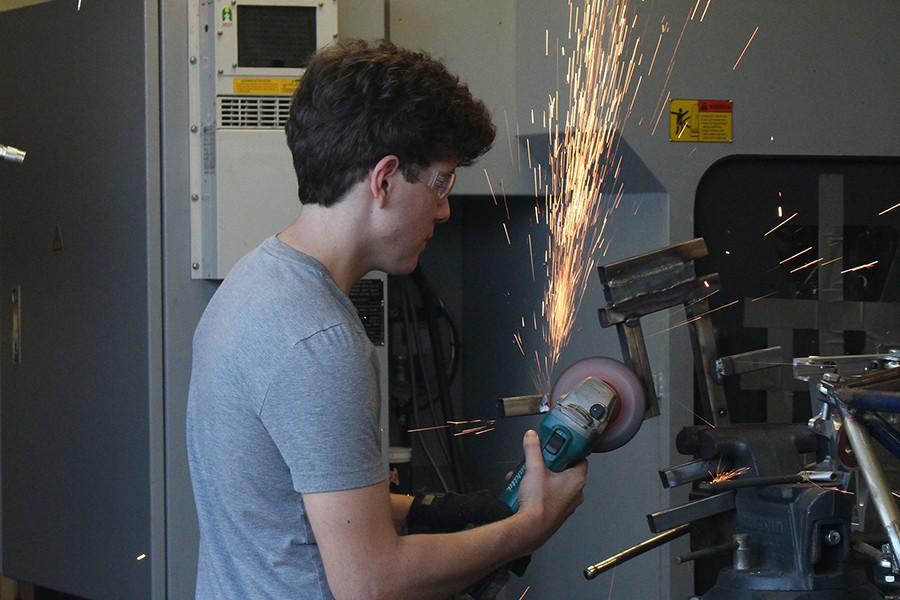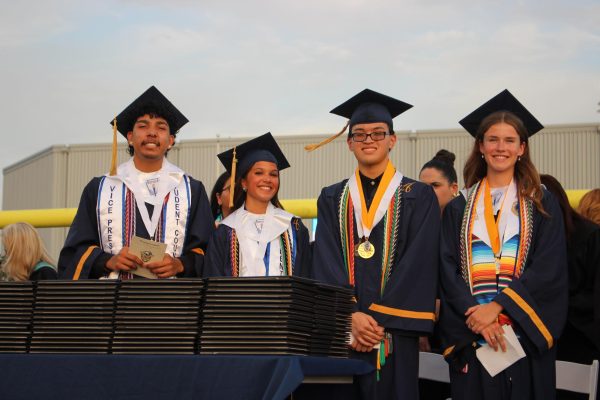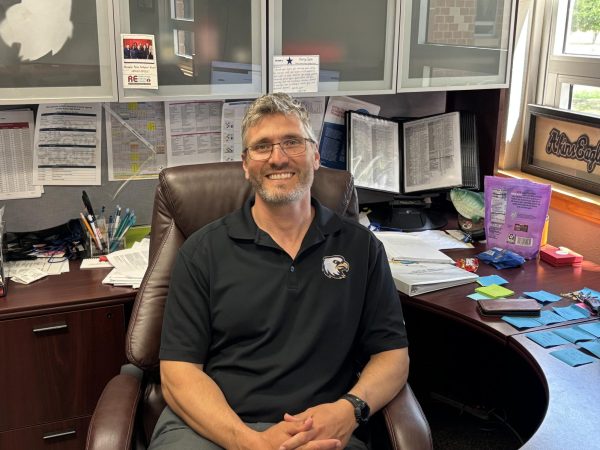Robotics Club hopes to grow by opening to all academies
Junior Peter Glass works on a go-kart piece, in preparation for the annual Blue & Gold Night.
November 12, 2015
Walking into the STEM workshop feels a little like walking into Home Depot except that you can play with all of the cool tools.
Drills, saws, and hulking machines fill every corner of the workshop. To the disappointment of STEM academy coordinator Allen Hubbard, much of that equipment was going unused after school by students.
Hubbard said previous administrators in charge of the shop decided that most students should not be allowed to work in there because they assumed the students would not be safe and responsible.
“Us as a school, we need to have steps to get regular 16 year old kids who are not (trained in STEM elective classes) to be able to be around equipment like that,” he said.
Until the beginning of this year, the workshop and the Robotics Club had a reputation of allowing only a small number of kids access to the garage. That resulted in only a handful of students being trained to use the technical and dangerous machines and tools in the lab, causing participation to be low.
“It was a lot more restricted earlier on about two years ago,” said James Garcia, Robotics Club Co-Founder. “At one point not a lot of people except the people who were coming after school were getting a lot of hands on experience.”
For years prior, many students were not able to take on projects of their own using the advanced equipment in the workshop, which houses a 3D printer, computer controlled milling machines and a full paint booth. There is also welding equipment and a variety of saws, ranging from the hobby level saw to the industrial grade.
Changes in leadership of the STEM Academy have allowed the club and workshop to be opened up to all students in all academies. Now all students are welcome to join the club and work on projects of their own if they undergo some training with teachers and other students.
This year, the Robotics Club leadership is hoping to turn the garage into a so called “makerspace” for all students who are interested. A “makerspace” is a place where people can come to bounce ideas off each other and help create different projects.
“We come here to share ideas and help each other achieve goals,” said Dylan Gerald, one of the Robotics Club’s faculty sponsors.
In the workshop, students not only work on projects that give back to the school but can, “accomplish engineering projects for their (STEM electives) classes” as well, Garcia said.
Garcia and Peter Glass, also a Robotics Club Co-Founder, along with STEM teachers and administrators have been working since August to bring the club back into the hands of students.
Both Hubbard and Gerald support the idea of using the workshop as a way to not only gain experience from another workfield many students have not been exposed to, but to give back to the school and community as well. One example is a project to create graphing calculator covers to replace those on campus that have been lost or broken.
Garcia and Glass have put a major focus on recruiting new members for the club. Last year, only about 15 students came after school to work in the lab, whereas this year, there have been about 25 students coming to work on projects of their own.
The Robotics Club has a variety of competitions to compete in, including the First Robotics Challenge in which a team creates a robot that can complete tasks. There is also the FSAE competition in which students compete on a college level to create an open wheeled racecar.
The F1 in Schools (FIS) competition allows students to create a balsa wood car used in a battle of aerodynamic design. This year, the club is hoping to have three teams compete in the F1 in Schools competition although F1 will not be as central to the club as in past years.
The resources that have been used in past years for one specific team for FIS will now be spread across the three teams that will be sent to compete. Leaders believe this will give novice engineering students the opportunity to gain more experience and continue to help the club grow as more students learn to use the equipment over the years.
F1 in Schools is educational for all students who attend, not just those who are going to major in STEM related fields.
“Attending a F1 race allows students to see all the work that happens to be put on at an international sporting event,” said STEM assistant principal Robert Deckard.
That includes the skills found outside of the traditional STEM focus areas, including marketing, graphic design and public speaking.
“The way that you get the most out of your education is by using the skills you learn in one class and applying them to another,” Deckard said. “At F1, students see that all these skills come together to get this finished product.”
With the workshop being open to all academies, any club wishing to create something that could be of assistance to their organization can talk to Hubbard or Deckard to learn how to use the equipment.









